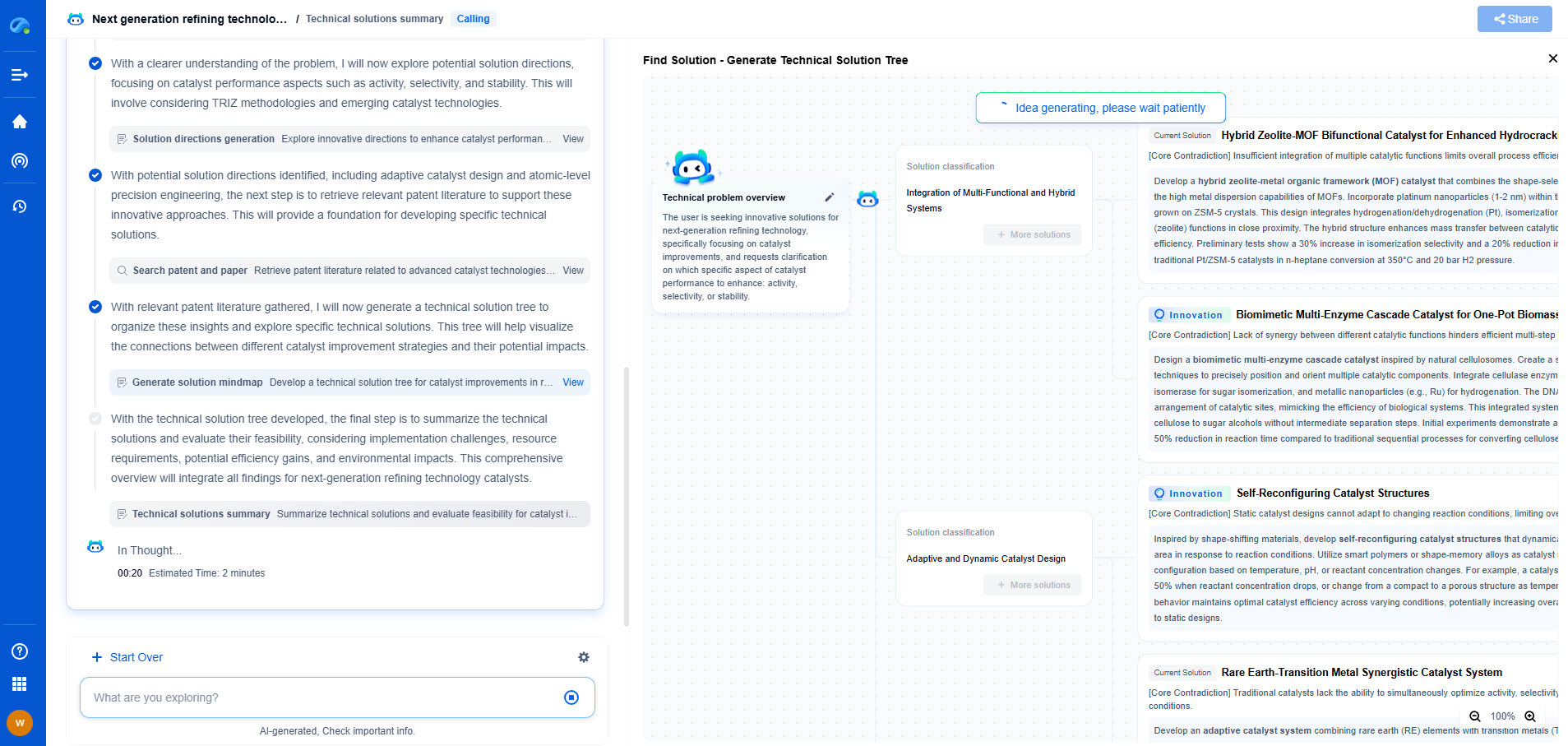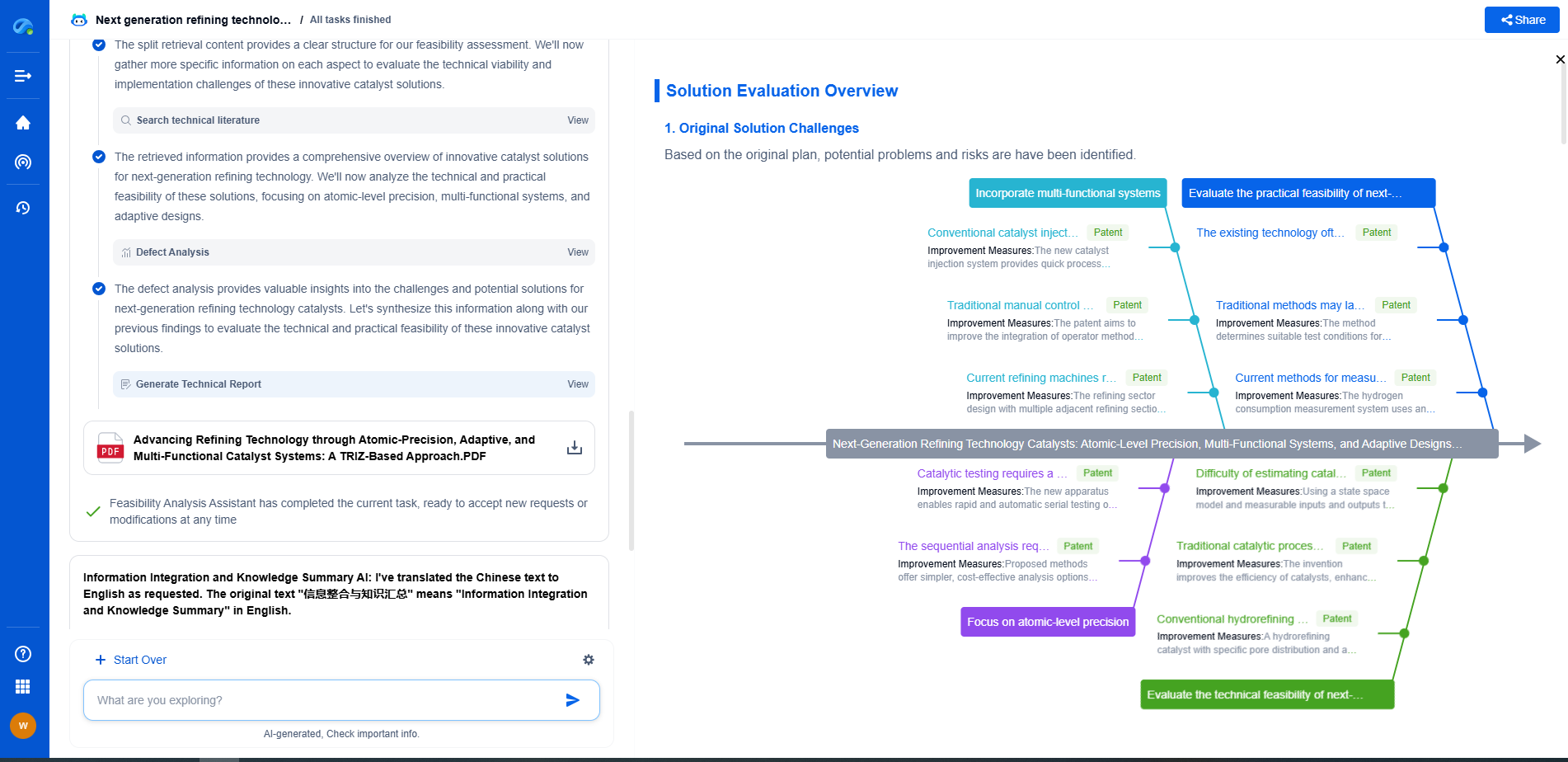The Role of Force Feedback Sensors in Modern Robotics
JUL 14, 2025 |
In recent years, the field of robotics has witnessed remarkable advancements, transforming how machines interact with the world around them. One crucial component driving this evolution is the force feedback sensor. These sensors play a fundamental role in enhancing the capabilities of robots, allowing them to perform tasks with precision, safety, and adaptability. In this blog, we will delve into the significance of force feedback sensors in modern robotics, exploring their applications, benefits, and future potential.
What Are Force Feedback Sensors?
Force feedback sensors are devices that measure force, pressure, or stress applied to an object. They provide real-time data to a robotic system, enabling it to respond to dynamic environments with greater sensitivity and accuracy. These sensors typically use piezoelectric, capacitive, or resistive methods to detect mechanical changes and convert them into electrical signals. As a result, robots equipped with force feedback sensors can detect minute changes in force, enhancing their ability to manipulate objects and navigate complex environments.
Applications in Industrial Robotics
In industrial settings, precision and safety are paramount. Force feedback sensors are integral to robotic arms and manipulators used in manufacturing, assembly lines, and quality control processes. With these sensors, robots can apply the exact amount of force needed to assemble delicate components or handle sensitive materials without causing damage. Additionally, force feedback sensors help ensure worker safety by enabling robots to detect human presence and adjust their operations to prevent accidents.
Enhancing Surgical Robotics
The medical field has also benefited significantly from the integration of force feedback sensors in robotic surgery systems. In minimally invasive procedures, surgeons rely on robotic instruments to perform precise movements inside the human body. Force feedback sensors provide tactile feedback to the surgeon, simulating the sense of touch and allowing for more controlled and accurate movements. This technology not only improves surgical outcomes but also reduces the risk of complications and shortens recovery times for patients.
Advancements in Autonomous Vehicles
Autonomous vehicles, including drones and self-driving cars, rely on sophisticated sensor systems to navigate and interact with their surroundings. Force feedback sensors play a critical role in these systems by enabling vehicles to detect and respond to changes in terrain or obstacles. For example, drones equipped with force feedback sensors can better adapt to wind conditions or land safely on uneven surfaces. Similarly, self-driving cars can use these sensors to improve braking and steering performance, enhancing overall safety on the road.
The Role in Human-Robot Interaction
As robots become more integrated into daily life, the ability to interact safely and efficiently with humans is of utmost importance. Force feedback sensors contribute to a more natural and intuitive interaction between robots and humans. They allow robots to gauge the amount of force required to perform tasks such as lifting, pushing, or pulling objects, making them more adaptable to varying human needs and preferences. This capability is particularly valuable in assistive robots designed to aid individuals with disabilities or the elderly, as it ensures a gentle and responsive touch.
Future Prospects and Challenges
The future of force feedback sensors in robotics is promising, with ongoing research focused on making these sensors smaller, more sensitive, and energy-efficient. Innovations in materials science, such as the development of flexible and stretchable sensors, could further expand their applications in fields like wearable robotics and prosthetics. However, challenges remain, including the need for improved data processing algorithms and integration with other sensor technologies to create more comprehensive robotic systems.
Conclusion
Force feedback sensors have become indispensable in the realm of modern robotics, providing the necessary touch and responsiveness that allow robots to interact with the world in sophisticated ways. From industrial automation to medical surgeries and autonomous vehicles, these sensors enhance precision, safety, and user experience across various applications. As technology continues to advance, force feedback sensors are poised to play an even greater role in shaping the future of robotics, driving innovations that will transform industries and improve human lives.
From 5G NR to SDN and quantum-safe encryption, the digital communication landscape is evolving faster than ever. For R&D teams and IP professionals, tracking protocol shifts, understanding standards like 3GPP and IEEE 802, and monitoring the global patent race are now mission-critical.
Patsnap Eureka, our intelligent AI assistant built for R&D professionals in high-tech sectors, empowers you with real-time expert-level analysis, technology roadmap exploration, and strategic mapping of core patents—all within a seamless, user-friendly interface.
📡 Experience Patsnap Eureka today and unlock next-gen insights into digital communication infrastructure, before your competitors do.
- R&D
- Intellectual Property
- Life Sciences
- Materials
- Tech Scout
- Unparalleled Data Quality
- Higher Quality Content
- 60% Fewer Hallucinations
Browse by: Latest US Patents, China's latest patents, Technical Efficacy Thesaurus, Application Domain, Technology Topic, Popular Technical Reports.
© 2025 PatSnap. All rights reserved.Legal|Privacy policy|Modern Slavery Act Transparency Statement|Sitemap|About US| Contact US: help@patsnap.com

